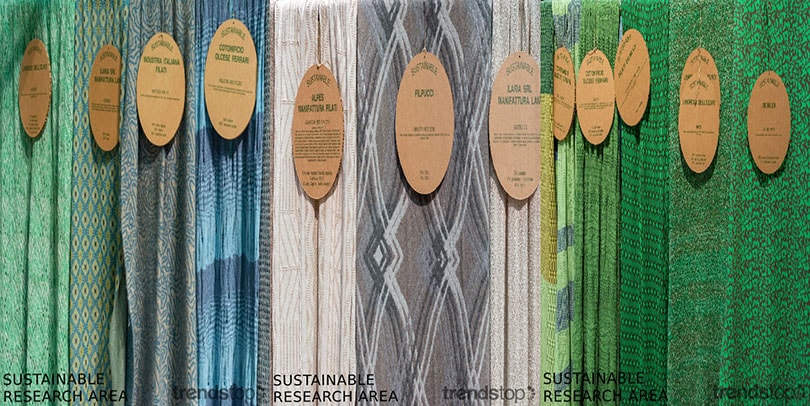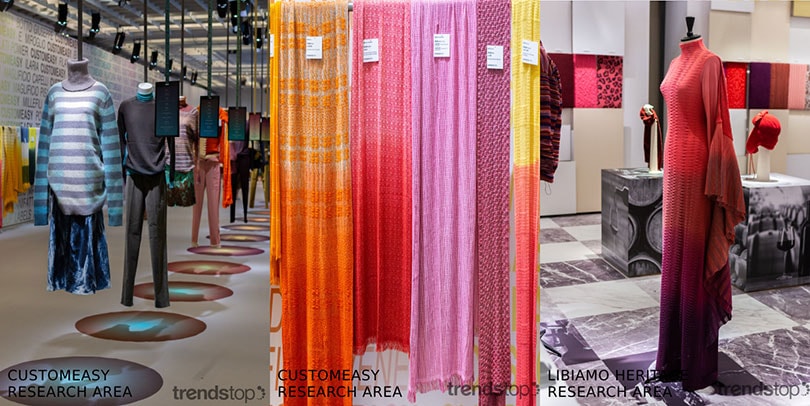
Trendstop brings FashionUnited readers a first look at the latest trend directions from the Fall Winter 2020-21 edition of Europe’s biggest yarn and knitwear showcase, Pitti Filati.
The Trendstop materials team give FashionUnited readers an exclusive insight into the key trends from Pitti Filati in Florence. The imposing Fortezza Da Basso once again played host to the specialist textile industry event and featured an impressive international line-up of exhibitors and visitors. Themes of heritage, customisation and sustainability were explored with manufacturers transforming yarns and displaying the latest creative techniques across a variety of exhibitions and experimental projects. Our comprehensive material show coverage and accompanying galleries evaluate each trend’s commercial value and longevity, giving you the best possible basis for your decision making.
This week Trendstop present three key aspects from Pitti Filati FW20-21. Sustainable Futures illustrates the industry’s focus on green initiatives and a re-think, re-use, re-knit approach to manufacturing. Celebrating uniqueness and moving away from mass-production is the story behind Custom Made while Modern Heritage puts a contemporary spin on knitwear classics.
Sustainable Futures
Pitti Filati embraced green initiatives for FW20-21 as manufacturers utilised recycled fibres and surplus yarns to create new raw materials. Eco-friendly fibres such as alpaca, mohair and wool blended with recycled polyester offer materials with a contemporary iridescence while multi-coloured, multi-textured yarns were mixed and matched for a creative, socially responsible attitude to knitwear production.

Custom Made
Customisation techniques broaden their streetwear and denim associations to inspire a new experimental culture within the industry. A collection of 60 unique sweaters displayed a host of innovative dyeing processes and adornments with manufacturers able to offer infinite interpretations of a particular yarn.

Modern Heritage
The 1950s to 1980 inspired the Heritage experimental project area with designers rediscovering the classic, elegant and sculptural aesthetics that defined the decades. Motifs such as houndstooth and diamond patterns were reimagined and modernised via muted tones, layering effects and matte finishes.

Exclusive Offer
FashionUnited readers can get free access to Trendstop’s Fall/Winter 2019-20 Pitti Filati Fabric Show Overview, a complete guide to the event with trends for the upcoming season. Simply click here to receive your free report.
Trendstop.com is one of the world's leading trend forecasting agencies for fashion and creative professionals, renowned for its insightful trend analysis and forecasts. Clients include H&M, Primark, Forever 21, Zalando, Geox, Evisu, Hugo Boss, L'Oreal and MTV.



























